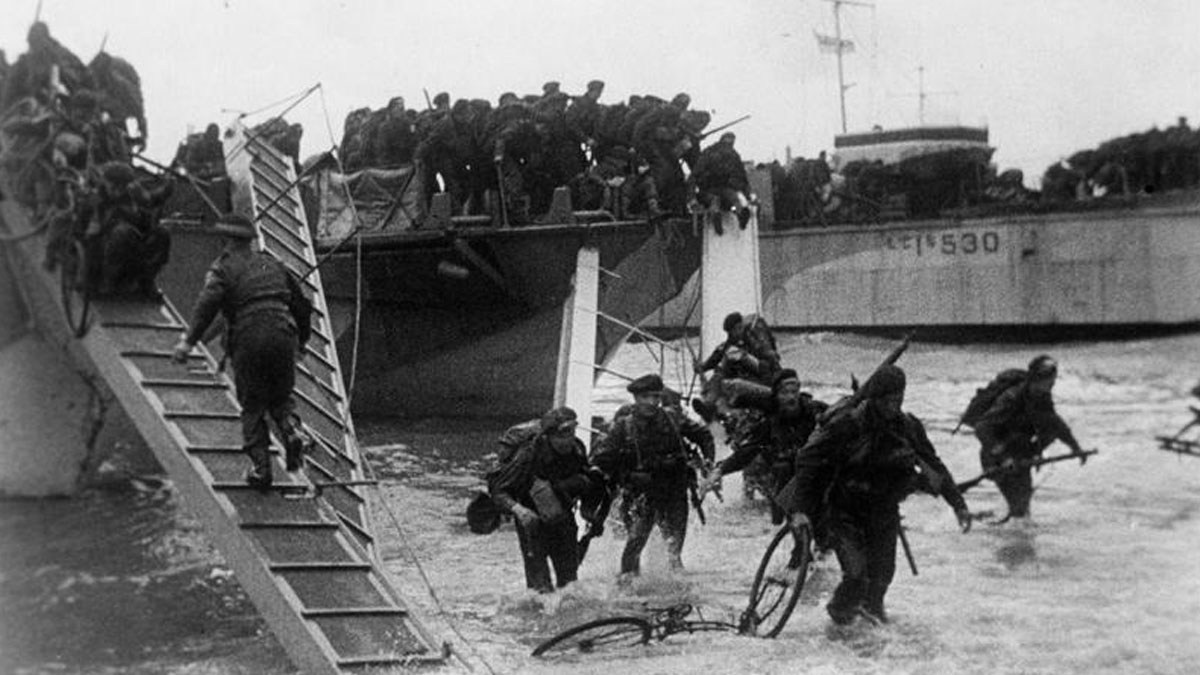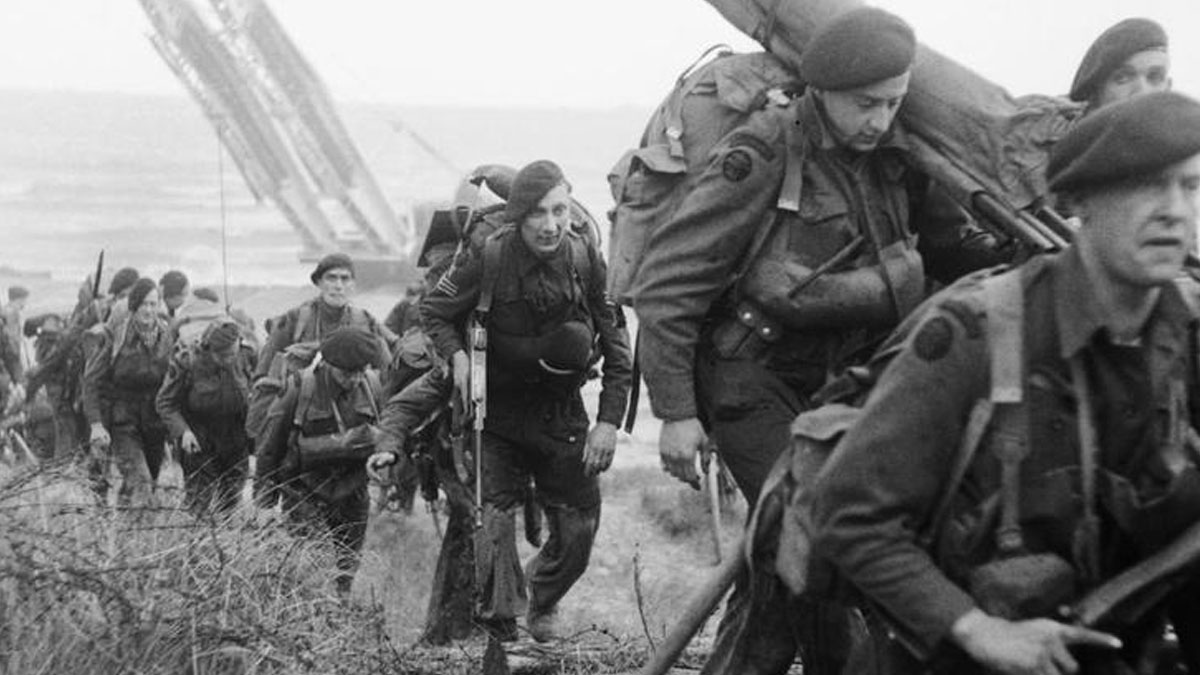Codenamed Sword Beach, the beachhead at Ouistreham lies 15km north of Caen in Normandy. It was one of five landing areas chosen for Operation Neptune, the initial assault phase of Operation Overlord. Sword Beach is the easternmost of the five landing areas. It runs 8km from Ouistreham to Saint-Aubin-sur-Mer.
From 1942, Sword Beach fell under the control of Generalleutenant Wilhelm Richter. His 8,000 man 716th Infantry Division controlled the area north of Caen, Normandy.
Securing Sword Beach was the responsibility of the British Army. The Royal Navy provided sea transport, minesweeping, and naval bombardment. As well as the British, the assault force consisted Poles, Norwegians, and other Allies. The 2nd Battalion Royal Ulster Rifles were amongst the British 3rd Infantry Division on D-Day. Their mission was to take the Norman town of Caen.
Sword was sub-divided into four landing sectors. From west to east; Oboe (from Saint-Aubin-sur-Mer to Luc-sur-Mer), Peter (from Luc-sur-Mer to Lion-sur-Mer), Queen (from Lion-sur-Mer to La Brèche d’Hermanville), and Roger (from La Brèche d’Hermanville to Ouistreham).
These sectors were again broken down into beaches. Queen Sector consisted three beaches; Red, White, and Green. Red and White Beaches were the primary landing area as shallow reefs blocked the others. The Allied invasion was to land at 0725hrs.
D-Day casualties on Sword Beach were much lower than on Omaha Beach or Utah Beach further west. The advance to Caen, though, was slow; fraught with well-defended villages and military positions. Beyond the beaches, an armoured counterattack from 21st Panzer Division held the Allies back.
The Allied assault on Sword
The invasion began at approximately 0300hrs. The air force and navy bombarded German coastal defences and tried to take out artillery sites. The landing was set for Queen Red and Queen White sectors near Hermanville-sur-Mer.
At 0725hrs, the first units set off for the beach. The amphibious tanks of the 13th and 18th Hussars led the charge of Royal Engineers in “Hobart’s Funnies”. Following them were the 8th Infantry Brigade.

Imperial War Museum Photo: BU 1184 (Part of the War Office Second World War Official Collection). A film still showing commandos laden with armour and weapons, and some with bicycles, from the No. 4 Commando, 1st Special Service Brigade disembarking their landing craft under fire on Queen Red Beach, Sword Area on the 6th June 1944.
The job of the engineers was to clear mines and obstacles from the beach. All the while, they came under fire from small arms and heavier artillery from Périers Ridge. To begin with, resistance was strong and wrecked vehicles and casualties mounted. By 0930hrs, the engineers in their inventive tanks cleared seven of the eight exits. The advance inland could then begin.
Despite tough resistance in Ouistreham, British and French commandos prevailed. They reached bridges on the River Orne and Caen Canal by 1300hrs. These bridges were already held by the men of the 6th Airborne Division who secured them the previous night.
To the west, the 4th Special Service Brigade commandos moved to link up with Canadian troops at Juno Beach. Meanwhile, the 3rd Infantry Division had taken Hermanville-sur-Mer by 1000hrs.
By the end of D-Day, 28,845 men had come ashore at Sword Beach. British casualties on Sword on 6th June amounted to 683 men.
In spite of the Atlantic Wall, over 156,000 men had been landed in France on the first day of the campaign.
LF Ellis – British Official Historian
The Sword Beach Memorials
The Free French Monument – also known as the Kieffer Monument – represents a flame. It stands by the beach and pays tribute to the Free French Forces who fought alongside the Allies on D-Day. Memorials like the steps towards the monument. Each one remembers a commando who lost his life on 6th June 1944.
At the harbour, there is a memorial to the men of the Royal Navy and Royal Marines. It commemorates the men of those divisions who fought and died there on Sword Beach in 1944.
As you progress inland to Ouistreham there are many commemorative plaques to Free French Commandos. On the southbound D514 stands a Liberation Monument remembering Kieffer’s 4th Commando unit.
Sword Beach is a great site for visitors, particularly those interested in the British stories from D-Day. Nearby museums include the Commando No. 4 Museum and the “Grand Bunker” Museum of the Atlantic Wall. The area is particularly handy for anyone visiting who arrives by ferry in Ouistreham port. This post makes up part of our travel diary from the 70th-anniversary of D-Day in Normandy 2014.
